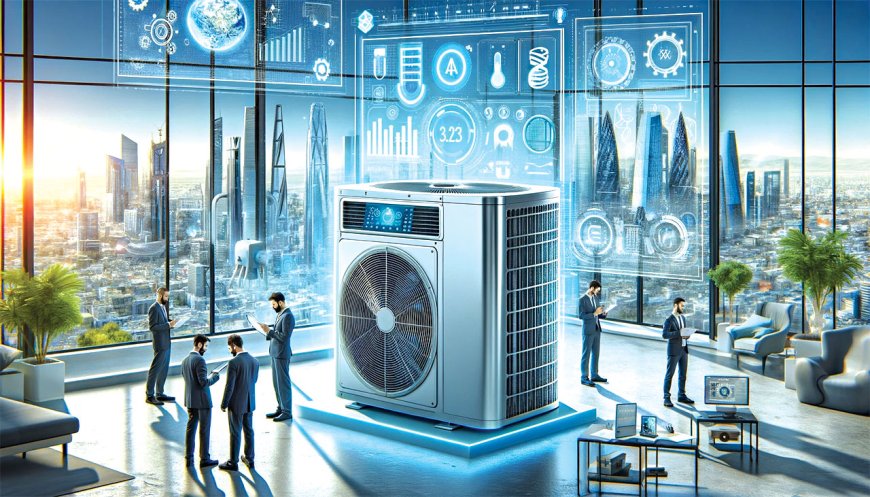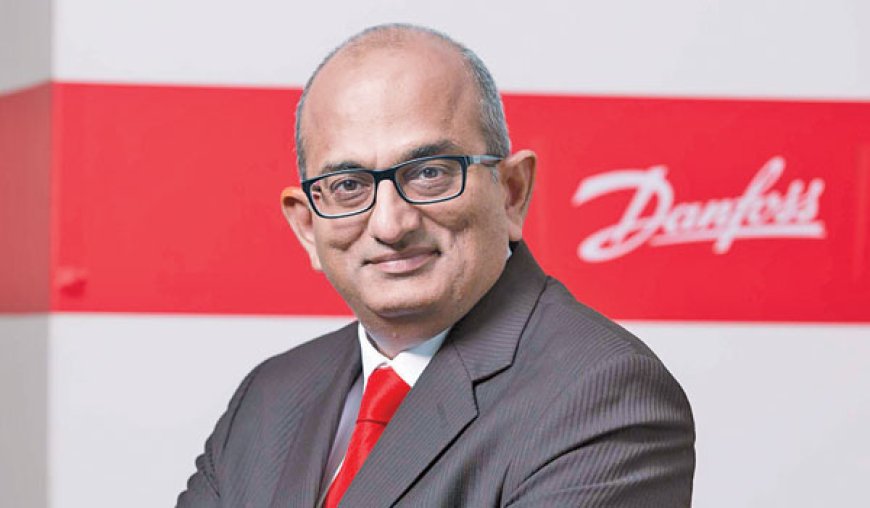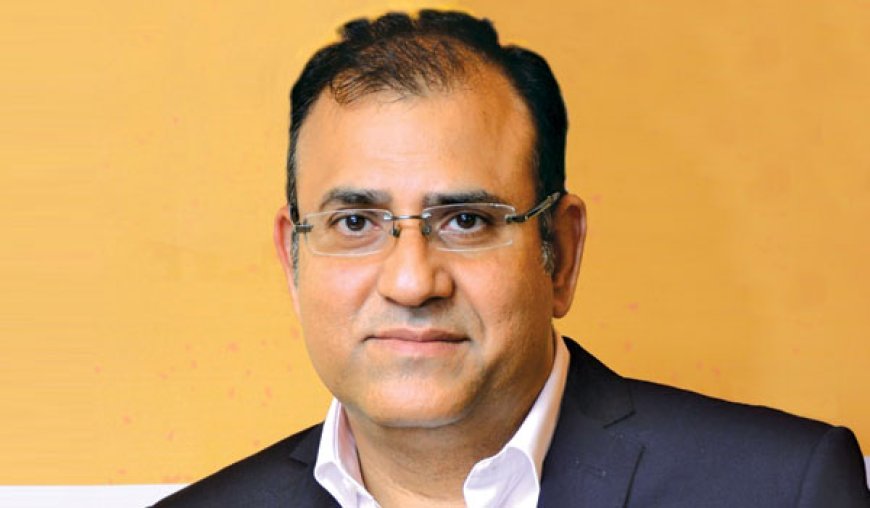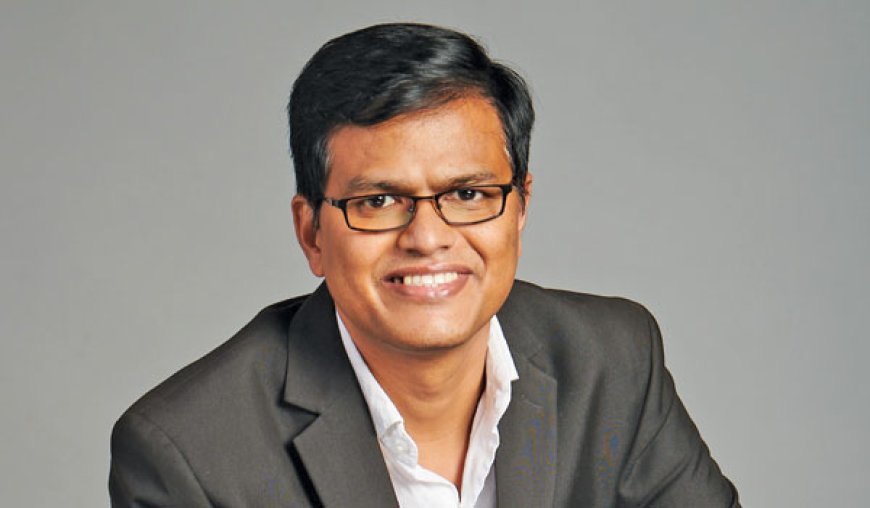Innovative solutions for a sustainable future

With over 50% of the country's buildings expected to be constructed in the next two decades, the market holds vast potential. In this scenario, Construction Times explores the opportunities for HVAC players.
Rapid urbanization, emergence of new buildings, and a thriving manufacturing sector are pushing the demand growth of the heating, ventilation and air-conditioning (HVAC) industry in India. Projections indicate that by 2030, the number of Indian cities with populations exceeding one million will increase from 42 to 68, driving the demand for HVAC systems.
Upcoming trends
The HVAC sector has seen tremendous rapid strides in the past few years owing to various reasons. The growing urbanisation across the country has pushed the demand for installing more HVAC systems in buildings and structures. The growth in industries and commercial spaces has necessitated more commercial and industrial buildings where necessary heating, cooling and ventilation systems are needed. The changing weather pattern has also demanded more comfortable living in the extreme hot and cold conditions in different parts of the country.

In this dynamic landscape, Carrier is strategically positioned to seize emerging opportunities. “The need for efficient HVAC systems centers around sustainability, efficiency, and technological innovation. Carrier India is working towards meeting these demands head-on with pioneering solutions that not only cater to the expectations of consumers but also contribute to a more sustainable and environmentally responsible future,” says Sundaresan Narayanan, Managing Director – HVAC, Carrier India.
Latest advancements

The demand for efficient HVAC systems in India is driven by a growing emphasis on sustainability, energy conservation, and occupant comfort. “Danfoss offers a range of innovative solutions designed to maximize energy efficiency and optimize performance. For instance, our variable speed drives can help reduce energy consumption by up to 50% in HVAC applications, contributing to significant cost savings and environmental benefits,” says Ravichandran Purushothaman, President, Danfoss India.

Sustainability plays a major role in HVAC systems as it is perhaps the biggest consumer of energy in buildings and structures. “Over 34% of the global energy demand and 37% of CO2 came from the HVAC sector in 2021. Within the building sector, HVAC is a major energy consumer with a nearly 50% share of the total energy used in a building. Therefore, reducing the energy consumption in the building sector will play a crucial part in the global fight against climate change. HVACs thus play an important role in any organization's ESG strategy since they have a large bearing on the carbon emissions of the organizations. Considering impact of HVACs in ESG frameworks, is an opportunity for the sector to bring in innovative technologies and approaches as building owners are willing to invest in such offerings to meet their ESG goals. Hence, the new opportunities for HVAC systems in future will be those that cater to the requirement of ESG/CFC benchmarks,” says Raman Sapru, Director - Design & Engineering, Mindspace Business Parks.

As the country is gearing up for meeting the net zero emission targets, HVAC segment plays a major role to contribute to this effort. “In resonance with India's pledge to achieve carbon neutrality by 2070, we deeply recognize the pivotal role our industry plays mitigating carbon footprints. The surge in societal consciousness surrounding sustainability and climate change has been palpable in recent years. HVAC systems, as significant contributors, have emerged as focal points for innovation. At Godrej MEP, we not only acknowledge this transformative shift but position ourselves at the forefront of driving positive change. The heightened sensitivity towards sustainability serves as a powerful catalyst propelling the HVAC systems integration industry into a future characterized by innovation and energy efficiency,” states Pravin Rawool, AVP & Head - MEP, Godrej Electricals & Electronics, Godrej & Boyce Mfg Co.
Choosing the right HVAC system
Selection of a suitable HVAC system plays a crucial role in gaining the maximum benefit from the HVAC system. In commercial developments, the selection of HVAC systems is influenced by various factors such as building type, climatic conditions, budgets, and project-specific needs. “For our commercial projects, we favour Chilled Water Systems,” says Sapru. “We ensure that our HVAC systems utilize environmentally-friendly refrigerants, aligning with green building standards. Complying with LEED standards and opting for refrigerants with low Global Warming Potential underscores our commitment to eco-conscious practices. In addressing indoor air quality concerns, our HVAC systems excel with advanced filtration and UV-C light disinfection. We undertake a modular and scalable approach, featuring rooftop units and variable refrigerant flow systems, and tailor solutions to the unique specifications of each space,” he adds.
An HVAC system has to meet the requirements of people’s comfort inside the building with the right control of air flow in different areas. “Occupant comfort is also an area of focus in our designs. We equip our buildings with cutting-edge HVAC systems, offering individual zone control to create an optimal environment. Our systems seamlessly blend traditional HVAC with innovative radiant heating and cooling solutions, ensuring not only comfort but also energy efficiency and forward-thinking climate control within our spaces,” says Sapru.
Rawool adds, “The HVAC system preference is contingent on various factors, with considerations ranging from energy efficiency goals to budget constraints and building characteristics. We understand that every project is unique, and we take pride in our ability to integrate HVAC solutions that align with the distinctive needs of each client. We offer integrated HVAC solutions that seamlessly incorporate pumps, VRVs, and various elements to create comprehensive, energy-efficient heating and cooling systems. Variable Refrigerant Volume (VRV) systems stand out for their individual zone control and energy efficiency, making them a preferred choice for many projects. At Godrej MEP, we envision a future where our seamless integrations contribute not just to comfort but to a sustainable, resilient, and environmentally conscious world.”
Looking ahead
With projections indicating a doubling of the urban population by 2050, the demand for HVAC solutions is set to soar. According to IEA, India's cooling energy demand is expected to grow by eight times between 2018 and 2050. In this scenario, it is imperative for industry stakeholders to not only address this burgeoning demand but to do so responsibly, considering the environmental implications. Narayanan highlights, “I firmly advocate that the future of HVAC lies in the adoption of high-efficiency equipment utilizing low GWP refrigerants. This approach not only aligns with global sustainability objectives but also meets the expectations of increasingly eco-conscious consumers.”







